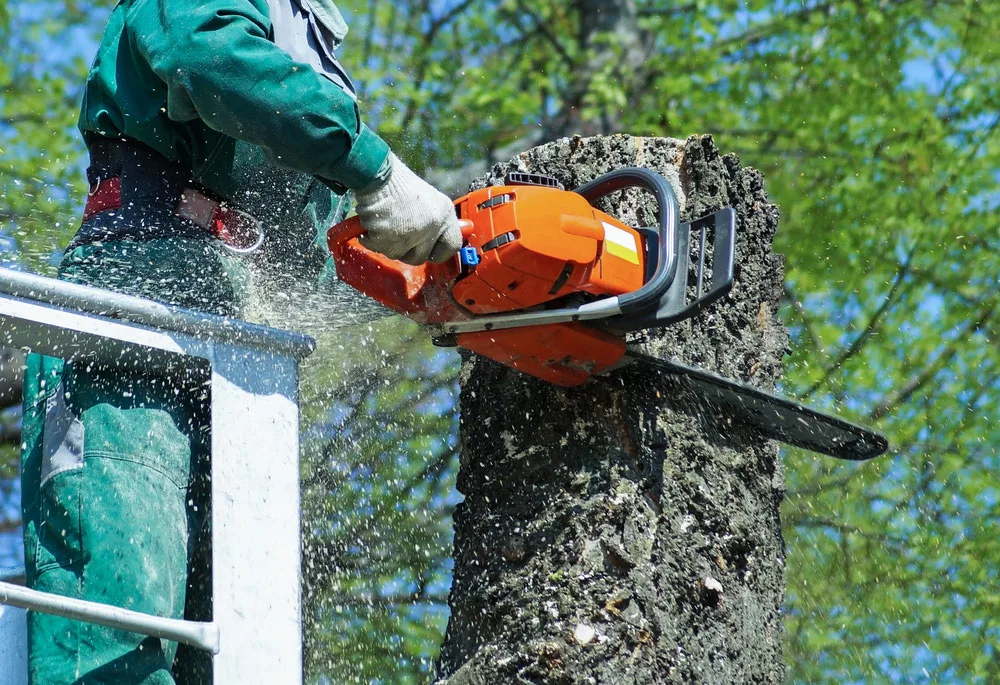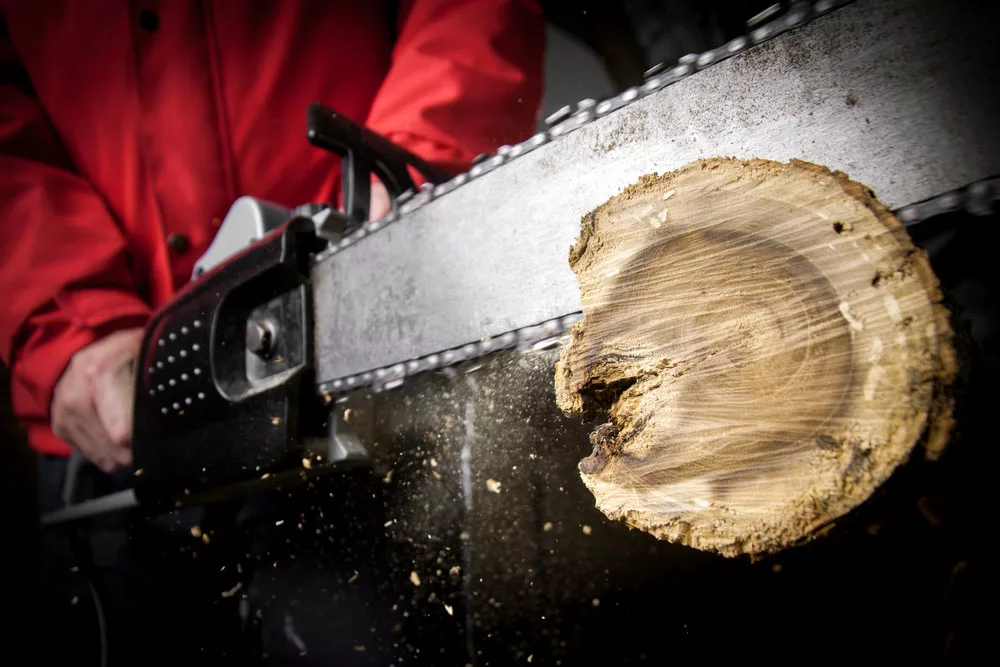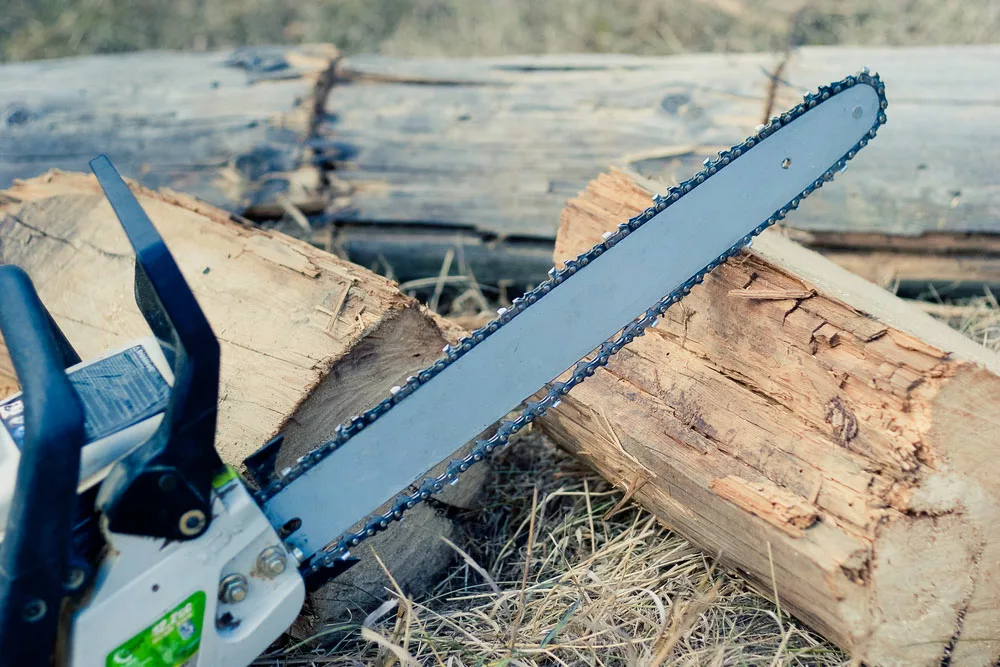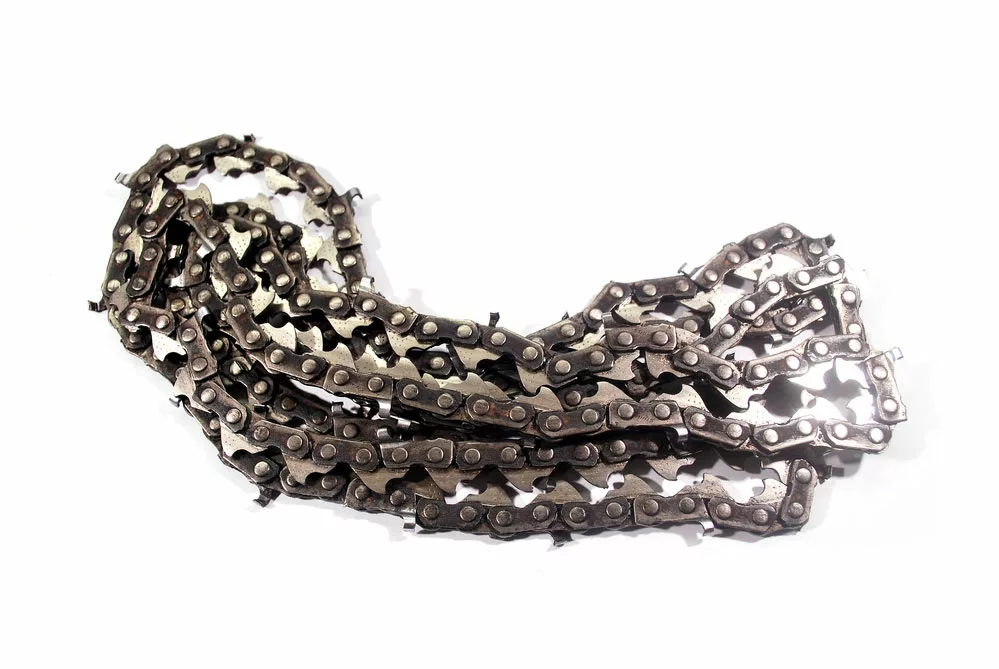There’s a ton of information on tightening your saw. However, finding the exact reasons for the problem may take work.
You’re in the right place if you wonder why your chainsaw chain gets loose every time you tighten it.
Today, we’re examining why the chainsaw chain keeps coming loose and how to solve the problem.
Let’s get rolling.
The Reason, Your Chainsaw Chain, Keeps Coming Loose
The chain is Not Set Well
Not setting your chainsaw’s chain correctly is one of the main reasons it’ll always keep coming loose.
Chainsaw chains stretch during everyday use and start sagging on the guide bar.
If you allow it to sag excessively, it’ll eventually come off the bar and endanger your life.
Ensure your chain is a little loose on the guide bar to be safe.
Also, set the tension properly to ensure it stays the same during use.

(Workers use chain saws)
Temperature Fluctuations
If you keep your chainsaw chain in a cool place, you could notice it is getting loose with use.
Chainsaw chains and guide bars are generally from high-strength, tempered steel metal.
And from science, we know that materials expand when subjected to heat and contract when cold.
Additionally, friction from cutting produces heat that warms your saw as you continue cutting.
Eventually, you’ll reach a point whereby your chainsaw chain expands and loosens up.
Damage To The Guide Bar Or Chain
One of three things—inadequate chain tension, a lack of lubricant, and mishaps or improper operating procedures—causes most guide bar issues.
The chainsaw chain gets loose once the bar is damaged and will come off.
To solve the problem, remove the chain, bar, and cover to check if your chain or bar has any damage.
If so, install replacements before getting back to work.
Mechanical Problems
Every time in a while, your saw will experience mechanical problems that may cause the chain to lose.
Remember, the space between the sprocket and the bar determines the tension of your chainsaw chain.
The chain tension becomes loose thanks to internal damage resulting from constant use.
And chainsaw mechanical problems are harder to fix, especially if you need more knowledge of how to do so.
Therefore, the best option is to call a professional to repair it.

(Chainsaw picture)
How to Tighten Chainsaw Chain
If your chainsaw chain keeps getting loose, you must know how to tighten it without professional assistance.
Generally, using a chainsaw will undoubtedly cause the chains to lengthen and eventually become loose.
Therefore, you should periodically check the chain’s tension to see whether a correction is necessary.
But be careful not to overtighten or under-tighten it as doing so spells danger for the woodworker.

(Chainsaw blade)
Let’s examine some chain tensions and why some are bad while others are ideal.
Unideal Tension
Look at the drive links to determine a chainsaw chain with improper tension. If the links are not engaged, adjust the chain’s tension.
Another way to determine improper tension is by pulling the chain away from the guide bar. If it comes off easily, adjust its tension before getting to work.
Ideal Tension
You can determine the proper tension by pulling the chain away from the guide bar and noting the gap. If it’s tiny, your saw has proper tension and is safe to use.
However, if the chain is too tight, you’re endangering your life as it may snap.

(Side view of a chainsaw)
Now, look at the necessary steps to tension your chainsaw chain properly.
Step One:
Loosen the guide bar and chain before correctly setting the two to the appropriate tension.
If your chainsaw has a brake attached to both components, unscrew it first. Afterward, remove the side panel, chain, and guide bar.
Step two:
Locate the tension adjustment screw and tighten it to increase the chainsaw chain’s tension. Conversely, unscrewing reduces the tightness of the chain.
Step three:
Tighten the side panel nuts and guiding bar. You lift the saw by the nose to ensure the chainsaw chain has uniform tension.

(A loose chain saw)
What to Do If Chainsaw Chains Fails To Tighten
If the chainsaw chain doesn’t tighten, inspect your machine for additional mechanical problems. Some common problems include:
- Stripped chainsaw threads
- Stripped tensioning screws
- Wrong guide bar
- The Wrong Chain.
In all the above cases, the best move is to replace worn-out parts with new ones is the best move.
Additionally, ensure you use the right guide bar and proper length chain.

(Spare parts chains of motor logging)
What if Your Chainsaw Chain is Too Tight?
Proper tensioning of your chainsaw chain is a skill we all should have. Most people dread using a chainsaw with a loose chain, but overtightened ones are equally dangerous.
If your chainsaw chain is too tight, the only solution is to adjust the tension.
And you can know the ideal tension by lifting the chain from the bar. A tensioned chain lifts away, but the drive links only partially come off the bar.
Chainsaw Chain: Determining the Right Length for Your Machine
Chainsaw chains aren’t the same; their lengths depend on the chainsaw. A woodworker must consider the bar’s measurement while determining the best chain length for their equipment.
Additionally, stretch out your old chain and count the drive links.
Afterward, buy one with an equal number of drive links. Other methods include measuring chain length, pitch, and the spacing between the chainsaw’s casing and tip.
(How to measure the guide bar length of a chainsaw)
Conclusion
When used correctly, chainsaws are safe and may last for decades.
However, abuse and misuse of the machine lead to catastrophic results, especially when the chain is loose or overly tight.
Luckily, we’ve quelled most fears you had about chainsaw chains.
Additionally, we have answered questions about why a chainsaw chain keeps coming loose.
Hope that helps you to solve some problems.
